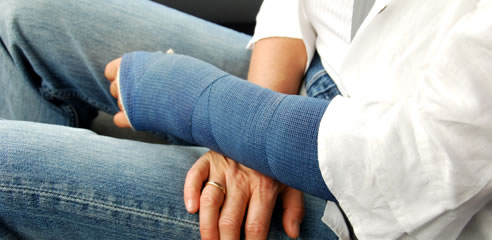Anyone, who has broken some limb at least once in a lifetime, knows how long and difficult the recovery process can be. The only right decision today is orthopedic cast, which fixes the bone and does not let the arm or leg move. One can spend from only a week to a few months in the cast.

And, of course, the cast does not treat you, it is your body that heals itself. This has been the traditional opinion till nowadays, but the scientists from the Center for Regenerative Biology in Georgia have created something more than mere cast, and they called it “a filler for fractures”. It heals a broken bone in a matter of days. This method will allow the patients to recover quickly and with fewer losses, because complex fractures are a common cause of amputations of limbs nowadays. For instance, it happens to American soldiers, civilians and riders, who often get into accidents and break their legs.
The scientists used “adult” stem cells for the production of a protein involved in the process of healing the broken bone and its formation. The component that has been obtained includes the gel with healing properties. The researchers conducted experiments on rats. The rodents, that had damaged their hind legs, easily stood on them two weeks later, showing no signs of pain and discomfort and running around the cage quite quickly. Inspired by the result, the researchers also conducted experiments with sheep and pigs, because it was necessary to check whether the new plaster worked equally well on large animals. It turned out that it worked. However, the therapy took a little longer – about four weeks.
At the same time with these developments, the scientists are conducting experiments with other materials that promote rapid healing of broken bones. If the “super-cast” proves effective for healing people (the project will be run till the end of the year), it might be used in a combination with polymers and implants. Thanks to the symbiosis of technologies, the patients with fractures will recover much faster. In addition, the people, injured in some extreme cases, will be forced to stay at hospital for less than four weeks, instead of the traditional three to six months. They will be able to leave the hospital, having restored their physical health rather quickly and with their composure preserved.










